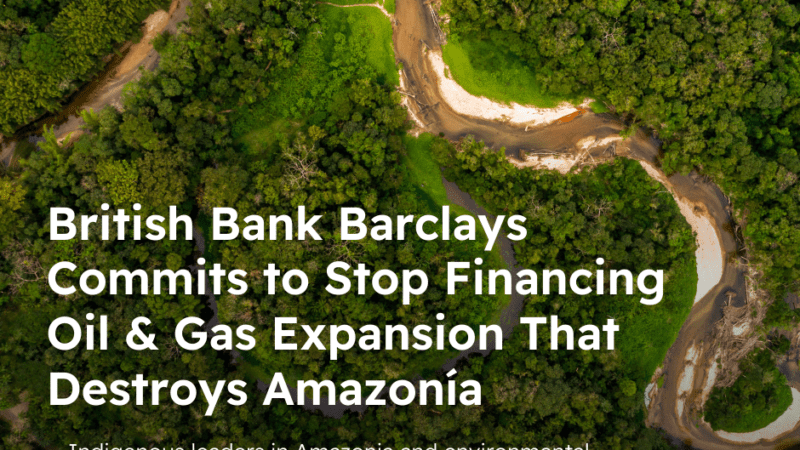New fashion scorecard finds brands continue to burn fossil fuels, evade accountability on renewable energy efforts
May 21, 2024
SAN FRANCISCO (Chochenyo and Karkin Ohlone Lands) — A 2024 report update to last year’s Fossil-Free Fashion Scorecard released today by environmental advocacy group Stand.earth finds that the world’s most influential fashion companies continue to rely on fossil fuels to manufacture their products, and are failing to decarbonize their supply chains. The purpose of the 2024 Clean Energy Close Up is to provide an in-depth analysis of the tangible progress of 11 of the most influential global fashion brands, specifically their progress in reducing emissions, phasing out coal and transitioning to renewable energy. Their performance is measured against the runway to an equitable fossil fuel phase-out by 2030, drawing in data shared publicly by manufacturers in their supply chains.
The 2024 Clean Energy Close Up concludes that, among 11 leading global fashion brands analyzed in the report, the majority scored less than 25 of 100 total possible points, demonstrating an alarming lack of progress and action toward decarbonization. Only Levi’s, Puma, and H&M are currently on track to reduce manufacturing emissions by at least 55% by 2030 compared to 2018 levels, despite that target being only six years away (2030).
Below are brand scores, with H&M, Puma, and Nike earning the highest scores, while Lululemon, Fast Retailing (e.g., Uniqlo), and Shein scored last:
Among the most concerning findings in the report is that fast-fashion giant Shein, which earned a 2.5/100 score, increased its absolute emissions by nearly 50% in just one year – now emitting more pollution annually than the nation of Paraguay. The e-retailer’s staggering growth alone threatens to undermine decarbonization progress made by more traditional brands.
Further complicating the clean energy transition, some brands are actively “greenwashing” their emissions, i.e., using marketing tactics to disguise a company’s pollution or distract consumers away from a brand’s climate action accountability. The release of the Clean Energy Close Up comes on the heels of the Canadian Competition Bureau’s announcement just weeks ago that it has officially opened an inquiry into Lululemon, following a complaint filed by Stand.earth that alleges the apparel company misleads customers about its environmental impact.
“The good news is that progress is happening. The bad news is that that progress is being undermined by dangerous pollution from ultra-fast fashion, and the growing threat of greenwashing. Simply put, most brands are not yet on track to decarbonize and many are heading in the wrong direction, and no matter the price printed on the tag, people and the planet are left to pay the true costs. These big players in the fashion industry must show leadership by rapidly phasing out fossil fuels and investing in tangible, renewable energy solutions,” said Rachel Kitchin, Senior Corporate Climate Campaigner at Stand.earth and the report’s lead author.
Signs of progress are limited but encouraging, the report finds, including Puma reporting significant growth last year in clean energy, building in 27.4% of its electricity usage with renewables across its two key supplier tiers. However, to prove the growth is tangible, the company needs to report details of on-site power generation and power purchase agreements, rather than ineffective renewable energy credits (RECs). Also, H&M now offers grants to suppliers to decarbonize – the only brand to do so – by installing rooftop solar, for example. That said, the company has yet to fully disclose its progress in phasing out fossil fuels and shifting to renewable energy.
The report is accompanied by a newly released Fashion Supply Chain Map, which provides an interactive tool to explore some of fashion’s most interwoven supplier relationships, and highlights the extreme ambition versus implementation gap between brands and their key product manufacturers.
“Right now, manufacturers are acting as ‘the fall guy’ for fashion’s climate pollution, while the brands pocket the profits from a safe distance. Brands’ failure to take responsibility for their emissions by funding and enabling the transition to renewables, while continuing to make more stuff, will mean more fossil fuel dependence in the Global South where their products are made, and cause harmful health and climate impacts for decades to come. Brands need to pay for the changes they demand by financing the renewable energy transition in their supply chains, and be more transparent about who their suppliers are and where they are located,” said Kitchin.
The Close Up builds on the foundation of Stand.earth’s Fossil Free Fashion Scorecard, which for the past several years has provided a detailed evaluation of fashion brands’ sustainability initiatives on energy, materials, circularity, and shipping. This latest analysis also provides detailed recommendations to help course correct and put these industry giants back on track to slash emissions by 55% by 2030, while enabling a dramatic supply chain transformation away from fossil fuels.
Fashion is a multi-trillion dollar industry responsible for producing 2 to 8% of global greenhouse gas emissions, and those emissions are expected to drastically increase by 2030. The industry’s manufacturing processes disproportionately rely on coal and other fossil fuels, undermining climate stability while also causing a devastating impact on the health of supply chain workers and their communities. A 2021 Harvard University study found that one in five deaths globally can be linked to air pollution caused by the burning of fossil fuels..
###
Media contact:
Shane Reese, Corporate Campaigns Media Director, shane.reese@stand.earth, +1 919 339 3785 (Eastern Time)



